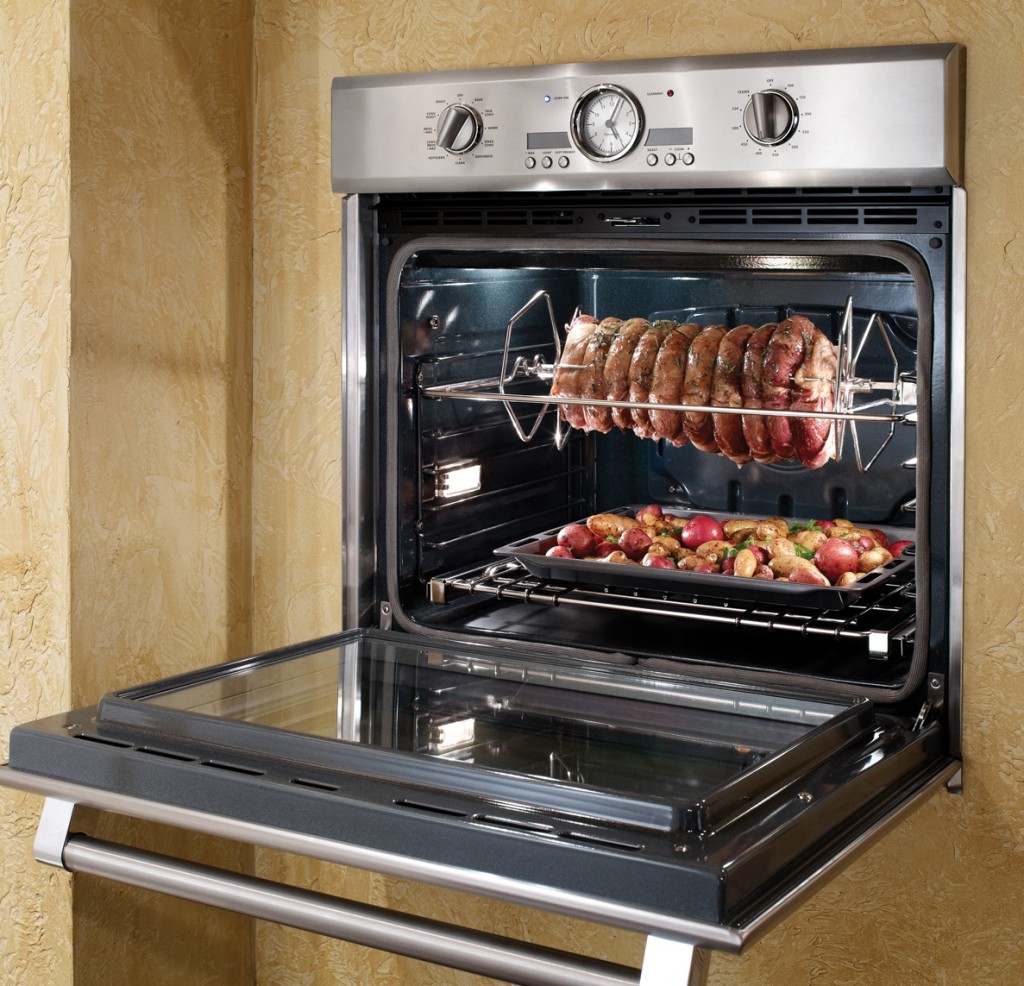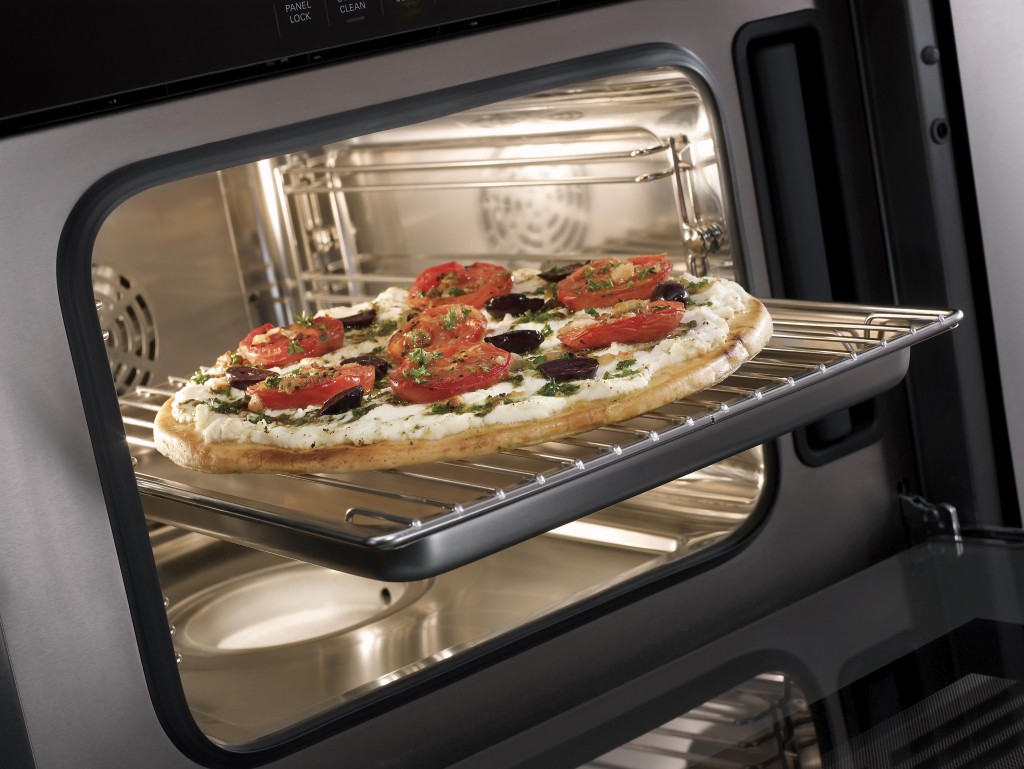Cooking with Convection Ovens and Steam Ovens: The Benefits of Each
One essential item in every kitchen is the oven – and with more features and choices available to culinary enthusiasts, including the introduction of steam ovens and the continued popularity of convection, it is important to understand the benefits of each in order to select the right option for your cooking style.
Convection Ovens
Convection ovens have become a staple in the American kitchen because they offer even heating and faster cooking times than a traditional thermal oven. This is because the fan inside of true convection ovens constantly circulates hot air throughout the oven cavity, creating an evenly heated environment for the dish and optimal results every time.
Today’s convection ovens offer an array of features that will help culinary enthusiasts create magnificent meals for large gatherings or quiet dinners with family. Depending on your cooking style, there are particular features that may elevate your cooking experience. For example, a faster preheat can cut down on preparation time – Thermador offers an oven that can preheat in just seven minutes!
Those who enjoy preparing large cuts of meat should make sure the oven offers a rotisserie or a temperature probe for perfect results time and again. And, cooks who prefer to do all the preparation at once will find that the assistance of true convection airflow ensures the food on every rack will cook evenly and prevents flavor transfer between dishes – meaning you can save time by heating the main entrée, side dishes and dessert simultaneously.
It is also important to think about the size of the meals you will be preparing in the oven – for example, a 30” built-in Thermador oven will fit a full-sized baking sheet, while some of the 36” convection ovens in our professional ranges are large enough to fit a commercial catering tray – an essential feature for ultimate holiday entertainers.
Convection ovens are great for preparing large meals, big cuts of meat and also for broiling and roasting. They are very versatile and will help real cooks to enjoy optimal baking results time and again.
Cooking with Steam
Newer to the American kitchen is the steam oven, which utilizes the power of steam to heat food quickly and seal in moisture, nutrients and flavor. When the oven is turned on, the water placed in the reservoir is heated and turned into steam.
While traditional ovens draw moisture out of food as it cooks, in a steam oven food is cooked in its own natural juices – no longer do your dishes need to be covered to prevent drying of the ingredients. This also eliminates the need to add items like butter or oil to provide flavor and moisture, which is one of the reasons steam is considered to be a healthier method of cooking. Contrary to what many may believe, food cooked in a steam oven still comes out with crisp, golden brown edges.
While cooking with steam is an incredible way to ensure your food is never overcooked and always tastes amazing, to get more out of this type of oven consider a combination steam and convection oven. These provide the option to use the appliance as a steam oven, as a traditional convection oven, or to combine the power of steam and convection together. Because of the latent energy of steam and the circulation of the convection fan, food cooked in combination mode can be heated much faster than in a traditional thermal or a traditional convection oven. The three different cooking options of a steam and convection oven will enable you to use it for a variety of needs, including: defrost, steam, bake, proof, slow cook and to refresh pre-cooked meals.
Interestingly, the introduction of the steam oven has now led to culinary enthusiasts decreasing use of their microwave. This is because steam ovens are excellent at reheating food without over drying. The moisture from the steam refreshes leftovers – especially pizza – preserving the taste and texture as though the item was freshly cooked; no more rubbery day-old pizza crust!
While most of the steam ovens on the market may seem compact at first glance, they can fit a surprising amount of food. In the case of the Thermador Steam and Convection Oven, it is spacious and powerful enough to cook a 14-pound turkey in just 90 minutes! Due to the smaller size and versatility, many culinary enthusiasts now prefer to use a steam oven for their everyday cooking and reheating needs, and reserve use of their larger convection oven for holidays or special occasions that bring together a bigger group of guests.
Peruse the variety of recipes Thermador has curated especially for Steam and Convection Ovens and also Convection Ovens on our website to see for yourself the array of uses each of these ovens provides to culinary enthusiasts.









Does the steam oven need to dry out after using it? Do I leave the door open? If it stays wet, will it not grow mold?
Hi Kothary, yes, it does need to dry out and you can leave the door slightly open to let it dry out and/or wipe down the stainless steel walls after use. The oven interior is made of Stainless Steel so it is not likely to grow mold. If you have further questions please email ThermadorCare@bshg.com. Thank you!
If the steam oven door is left ajar to dry out the oven, how is the light turned off?
How is the steam oven light turned off to facilitate leaving the door ajar as advised?
Do all 30 inch Thermador ovens take a full-size cookie sheet? I’m looking at the double wall ovens.
Thanks